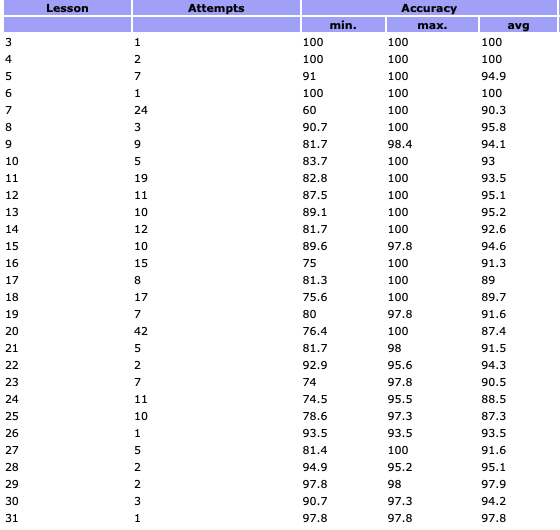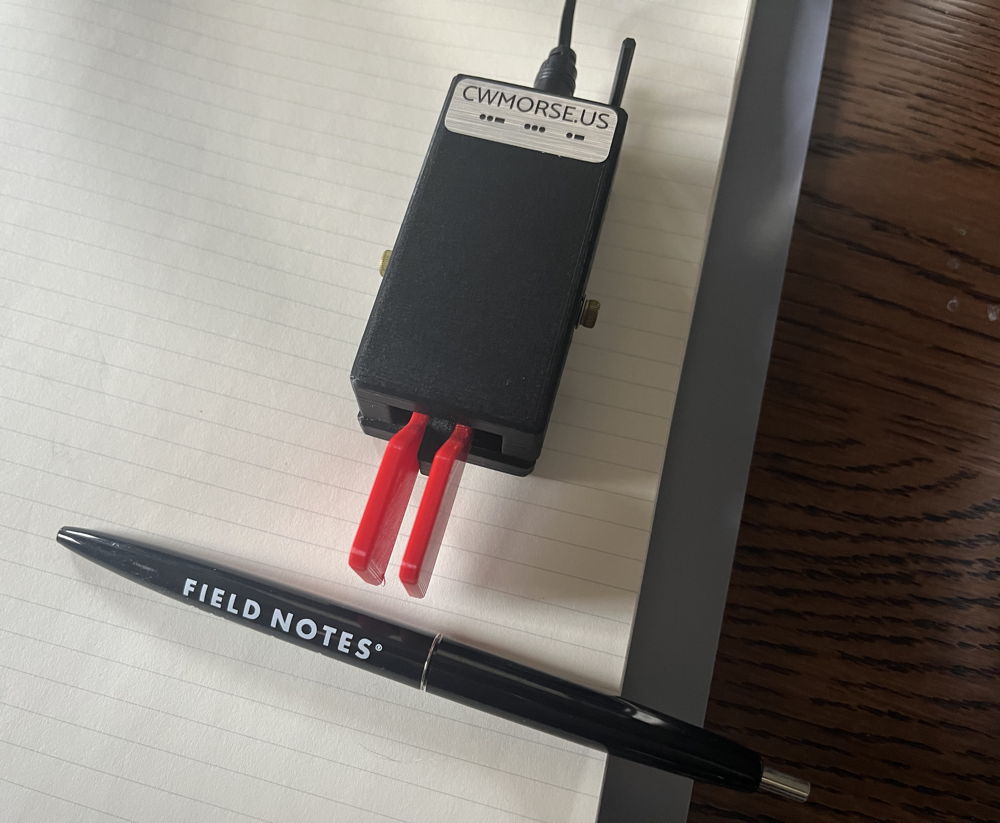The Challenge
The date of this posting is day 31 (for me) of the CW100Days Challenge started on Mastodon by F1RUM. Part of the community and accountability of the hashtag is to post a daily update of exercises and work done. I’ve been doing that, but it makes sense to have a slightly more durable account of the first 30% of the challenge.
The Method So Far
Mixing up modes and approaches seems to keep me engaged. I don’t think that I could use one tool for this and be successful. There are a few different things that I’m using consistently that seem to help a lot:
LCWO has some really great tools. It has lessons based on the Koch method as well as word, plain text, and callsign practice. All of those are really useful and it keeps statistics for each user. For example, my Koch lessons looks like this:

It also has a neat training tool called MorseMachine. It selects a range of characters based on the Koch method and drills the user by selecting random characters. For building character recognition, there’s really nothing better than this, in my experience. There are other apps on iOS that take a similar approach but I like that this is integrated to LCWO and allows me to warm up a little before lessons.
Morse-It is a neat app that I mostly use to practice sending. I have an interface for my key that sends keyboard commands for left and right control keys that acts as Dahs and Dits when configured as a paddle in the app. It’s a USB interface that uses the Apple camera kit adapter called the VBand. I can say, it works really, really well with my iPad and iPhone.
It seems that sending isn’t emphasized because it’s easier, but much like taking dication in music, if you don’t have a sense of the gesture that creates the sound, it becomes much harder to decode. In my experience thus far, I would say that neglecting sending practice makes decoding more difficult.
The other thing that I’m doing a couple of times a week is pulling up some of the Code Practice Archive MP3 files from ARRL. There are all different speeds. The text is usually pulled at random from an old issue of QST which is great! There’s no telling what it’s going to be about. You’ll get proper names mixed in with technical terms and the occasional formula. Certainly never a dull moment. It’s a great place for me to check and see if I’m really making progress with larger blocks and it does test the ear’s endurance.
Also, the videos of activations on K4SWL’s site, QRPer.com are great resources. Listening to how the actual streams come in and seeing what it’s like to pick things out of a pile-up in practice is great. Patreon patrons (like me!) can even download videos for later viewing / practice.
Observations
I was surprised that when I started the challenge I had already more or less mastered the character set. I didn’t know that my noodling a little bit every day was sticking. But it was! That’s exciting and I think it gave me a leg up when I started the challenge.
This is a dumb one, but… Copying words is easier than copying random strings. My head copy for random strings is garbage. I can’t hold more than 3 or 4 characters before I get lost. But callsigns? They have a pattern. Actual words? They are quite well known to me. It’s easy to autocomplete some of them in my head when I’m given the first couple of characters. Real words also emphasize patterns. “I-N-G” travel together frequently. “S” ends a lot of words. “A-N” is almost always followed by “D”. Those become larger patterns that stick.
Working on patterns more often found in POTA QSOs and the like is also instructive. At the end of the day, the only potentially random string is a callsign and that’s hardly random.
Inertia
An object in motion tends to stay in motion, right?
The best thing about this little challenge is that it keeps me mindful that I need to spend my 15-30 minutes a day focused on building skills. It’s almost silly how much motivation this challenge has provided. I’ll do another update in another 30 days. But I can say that I’m going to be getting on the air soon. Maybe not for an activation, but perhaps to hunt some POTA and get my feet wet.
More progress. More to come.
![]()
